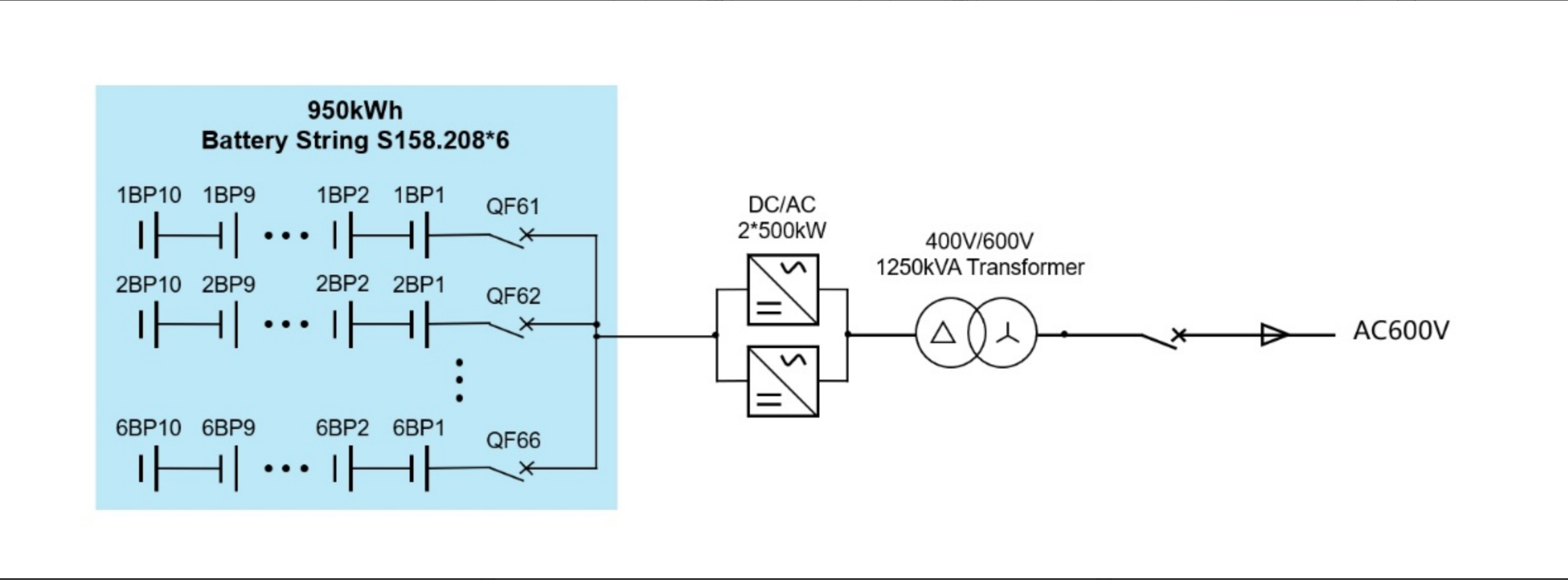
 0086 0755 21380136
0086 0755 21380136
 0086 0755 21380136
0086 0755 21380136
 sales@megarevo.com.cn
sales@megarevo.com.cn
 2024-12-09
2024-12-09
 Industry information
Industry information
 Megarevo
Megarevo
Current status of energy use in oil fields
Due to the remoteness of oil drilling sites, the local power grid infrastructure is weak and there is often a problem of insufficient power grid capacity. In addition, there is an impact load on the power grid during the drilling process. The local power grid is difficult to support the load demand during the drilling process, and diesel generators or gas generators are often used for auxiliary power supply.
Challenges
1. Low (insufficient) utilization of grid capacity:
2. The mining site is remote, the local power infrastructure is weak, and the transformer margin is insufficient
3. The load changes quickly, there are many impact loads, and high-power impact equipment such as winches and mud pumps will affect the stability of the voltage.
4. Diesel generators have high energy costs and initial investment cost
5. When dealing with large loads, diesel generators have low conversion efficiency;
6. Environmental pollution and noise pollution are serious
Energy supply analysis in drilling conditions
The electrical equipment used in drilling platforms includes: winch, mud pump, top drive, solid control, barracks and auxiliary equipment, etc. The power grid line is generally 10kV. The power grid selects different diesel generator capacities according to the drilling plan. Currently, 70DB usually selects 4000kVA and 3150kVA transformer capacities, and 50DB usually selects 3150kVA and 2500kVA transformer capacities. Currently, 70DB and 50DB equipment are the most commonly used.
Load changes under different drilling conditions

During the whole drilling process, the workload of different loads varies greatly. The impact load is very frequent during operation and the power is the highest during the drilling stage.

The drilling start has typical load characteristics, with load fluctuations of up to 700kW and relatively low variation in drilling start.

The drilling and pulling-out conditions are similar, with relatively low load fluctuations and overall low loads.
Basis for designing energy storage system solutions:

By considering the load characteristics, maximum power, and energy storage startup power during the entire drilling process, the maximum energy storage power demand is calculated. Based on the calculation results, You need taken some factors into account,
such as charging and discharging efficiency, discharge depth, and then calculate the actual configuration capacity.
For example: considering the impact load characteristics of winches, mud pumps, top drives, etc., the energy storage design power is 1000kW. Taking emergency needs into consideration and excluding the situation where the system load is too high for a short time under special working conditions, the designed maximum output power of the energy storage is 1000kW. The system can support emergency power supply for most non-drilling operation scenarios.
Actual capacity requirements
Through the analysis of the above icons, we found that the power is relatively high only during drilling, stopping and starting drilling, and the power can be close to 1600kW. The normal drilling working power is 900kW~1600kW. The designed energy storage starting power control power is 1260kW and the discharge power is 1200kW. When the power is lower than 800kW, the energy storage starts charging. During charging, the total power is controlled not to exceed 1200kW. Based on this, the maximum energy storage demand is estimated to be 436kWh.
Drilling power conditions | Energy storage charging and discharging logic | Charge/ discharge power | Working hours | Max. charge /discharge capacity |
Normal drilling | Discharge, control the incoming load not to exceed 1260kW, and return if it is lower than 1200kW | 0~300kW | 10min | 36kWh |
Power surge during drilling stop | Discharge, control the incoming load not to exceed 1260kW, and return if it is lower than 1200kW | 0~400kW | 20min | 133kWh |
Stop drilling | Charging: Start charging at less than 800kW and control the incoming line load to no more than 1200kW | -900~0 | 10min | 150kWh |
Power outage emergency | Maximum emergency power 1000kW | 0~800kW | 20min | 267kWh |
The operation of the energy storage system also needs to comprehensively consider factors such as charging and discharging efficiency, discharge depth, and attenuation. This project assumes 1C batteries, 80% full power discharge depth, and 92% discharge efficiency. Considering that the system can still meet the demand at the end of its life, EOL 70% is considered here. Based on the above factors, the actual configuration capacity of the energy storage system is not less than: 436/0.8/0.92/0.7=846kWh
In the above calculations, all power demands are calculated according to the maximum demand, and the maximum power replenishment for a single time is 150kWh. In the most extreme case, the energy storage system cannot support drilling operations for multiple times in a row. If the energy storage battery capacity is not over-allocated or slightly over-allocated, the drilling stop time needs to be extended.
Based on the selection, This project was finally configured with a 1000kW/950kWh energy storage system
Energy storage system topology diagram:

Advantages of installing energy storage system in the project:
1. Reduce the capacity of power grid and distribution equipment, stabilize terminal voltage, reduce basic costs,
2. The energy storage system meets the power supply needs of peak power restrictions and emergency conditions based on peak load shaving and valley filling, and improves operation safety;
3. Reduce the impact of large alternating loads on the power grid and reduce the requirements for unit performance.